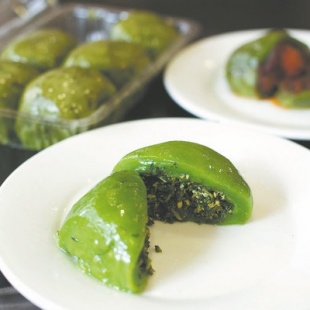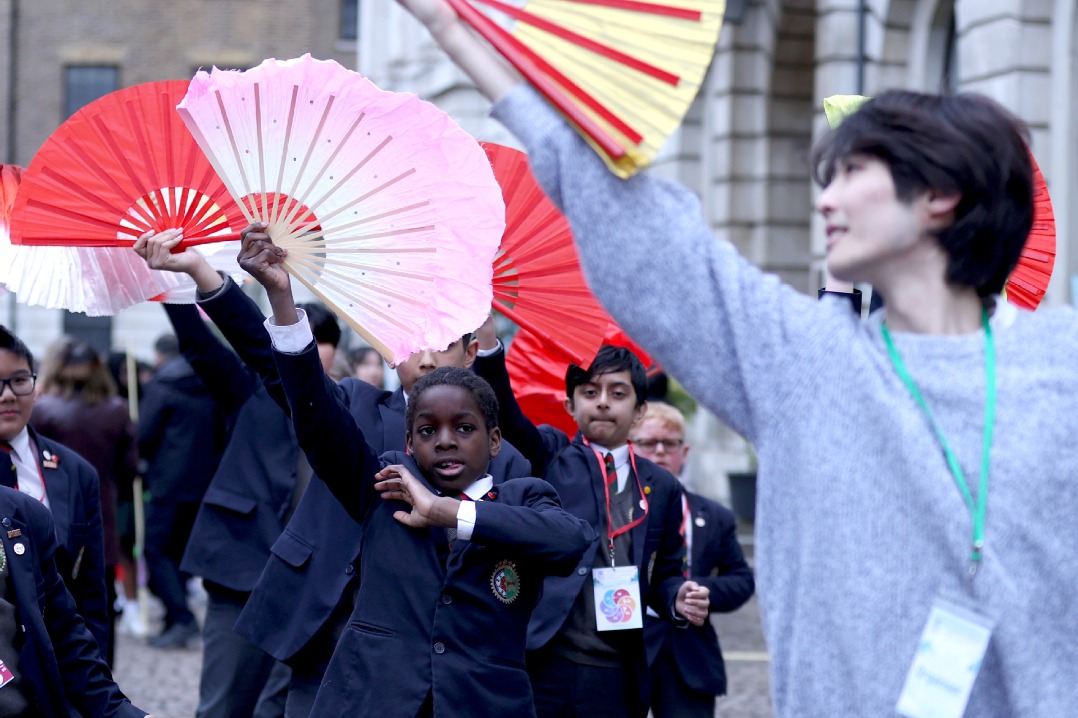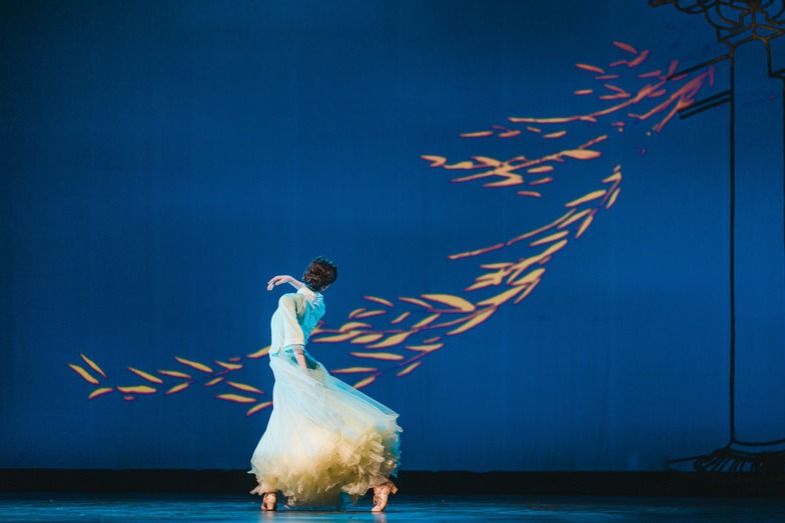Tweaking the taste of spring
Traditional Qingming Festival snack gets makeover with novel stuffings, earning it appreciation beyond the Jiangnan region, Lin Shujuan reports.

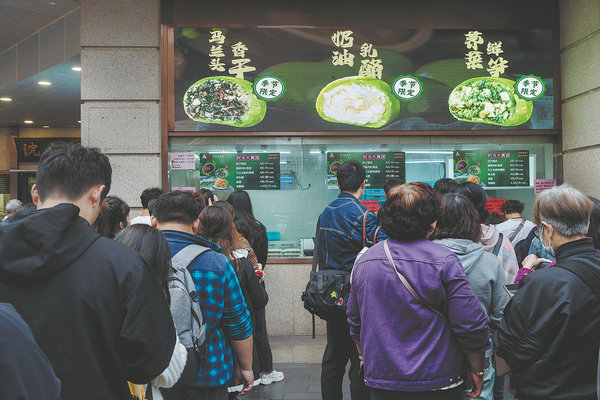
Every year, from mid-March to early April, as the Qingming Festival approaches, Zhang Min's life revolves around the green glutinous rice balls known as qingtuan.
A native of Shanghai in her early 50s, Zhang previously ran a restaurant for over a decade. Thanks to her culinary expertise, she has garnered a loyal following on WeChat for her homemade seasonal delicacies, with qingtuan being one of her most sought-after treats.
The delicacy's shiny green exterior is made of glutinous rice flour mixed with freshly extracted green grass juice, and emits a delightful aroma. Typically, it contains stuffing like sweet red bean paste. First made about 1,000 years ago, qingtuan originated as a sacrificial offering and has evolved into a seasonal street snack popular in southern China during the annual Qingming Festival.
In recent years, driven by endorsements from key influencers on social media and the publicity generated by the new fillings introduced every year by established Shanghai food brands, the appeal of this seasonal delicacy has transcended its traditional production area in the Jiangnan, or the region south of the Yangtze River along its lower reaches, to get to nearly every corner of the country.
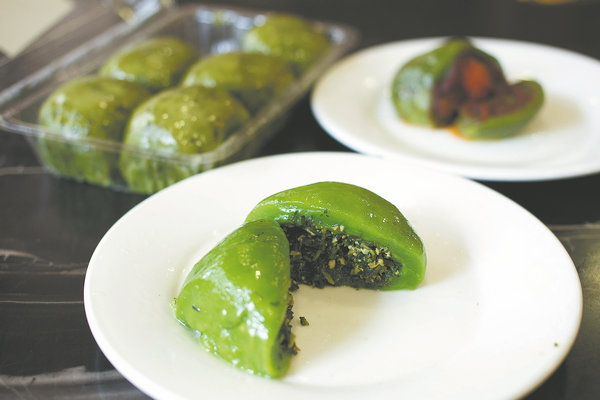
This surge in popularity is evident not only in the long queues forming outside Shanghai's venerable stores but also in the hundreds of thousands of orders placed on e-commerce platforms like Taobao and JD, as well as on fresh grocery delivery apps like Dingdong.
For Zhang, the growing popularity of qingtuan means an influx of orders from her friends and relatives in the three weeks leading up to Qingming, which falls on Thursday. Nevertheless, she embraces the busiest season of the year and celebrates the resurgence of qingtuan, which she says embodies the magic of Chinese culinary tradition.
Many traditional delicacies, like tangyuan (glutinous rice balls stuffed with black sesame or peanut butter) for the Lantern Festival and zongzi (sweet or savory stuffed rice dumplings wrapped in bamboo leaves) for the Dragon Boat Festival, use glutinous rice as a primary ingredient. What sets qingtuan apart is its use of the green juice extracted from tender grass, which is only available in spring. This makes it a seasonal delicacy. With its soft, sweet texture and fragrant grassy aroma, it symbolizes the end of winter and the arrival of warmer weather.


